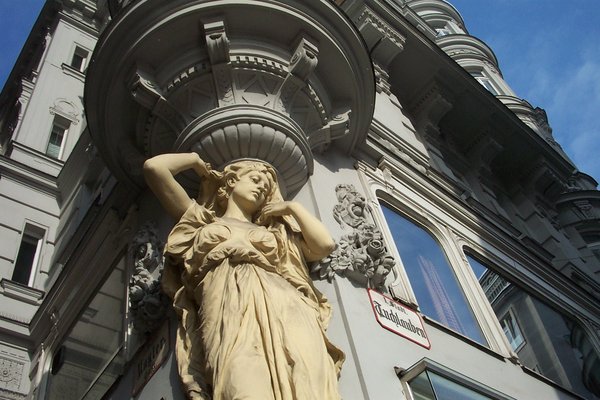Austria
Vienna
The Historic Centre of Vienna holds significant architecture from three periods (the Middle Ages, the Baroque period, and the Gründerzeit) and is a capital of music.
Vienna was the capital of the Austro-Hungarian Empire and medieval-era buildings remain in the inner city. The Habsburg Emperor Frederick III transformed it into an imperial residence with a strong Baroque character. Further expansion of the city led to the construction of fine examples of late 19th and early 20th century architecture along the Ring.
Community Perspective: Magnificent and Majestic. Assif highlights a number of museums to visit, Hubert the Art Nouveau masterpiece Postsparkasse and Matejicek the time-layers of the Michaelerplatz.
Site Info
Official Information
- Full Name
- Historic Centre of Vienna (ID: 1033)
- Country
- Austria
- Status
-
Inscribed 2001
Site history
History of Vienna
- 2017: In Danger
- due to high-rise projects
- 2001: Inscribed
- Inscribed
- In Danger
- due to high-rise projects Since 2017
- Type
- Cultural
- Criteria
- ii
- iv
- vi
Links
- UNESCO
- whc.unesco.org
- Official
-
- wien.info — Vienna cultural heritage
- Related
-
- srs.at — Spanische Hofreitschule
- wien.gv.at — Contemporary constructions in Vienna
- onb.ac.at — Nationalbibliothek
All Links
UNESCO.org
- whc.unesco.org — whc.unesco.org/
Official Website
- wien.info — Vienna cultural heritage
Related Resources
- srs.at — Spanische Hofreitschule
- wien.gv.at — Contemporary constructions in Vienna
- onb.ac.at — Nationalbibliothek
- vienna4u.at — Traditional cafes
- nhm-wien.ac.at — Museum of Natural History
- stephansdom.at — Stephansdom
- sisimuseum-hofburg.at — Hofburg
- belvedere.at — Belvedere
- schottenpfarre.at — Schottenpfarre
- kaisergruft.at — Kaisergruft
- karlskirche.at — Karlskirche
- wienmuseum.at — Museum of Vienna, includes the Roman excavations
- jmw.at — Excavations at Judenplatz
- musikverein.at — Musikverein
- wiener-staatsoper.at — Opera
- burgtheater.at — Burgtheater
- loosbar.at — Adolf Loos' American Bar
- ottowagner.com — Otto Wagner's Postsparkasse
- kaiserliche-schatzkammer.at — Kaiserliche Schatzkammer
- khm.at — Museum of Art History
Community Information
- Community Category
- Urban landscape: Medieval European
- Urban landscape: Post-medieval European
Travel Information
One million visitors or more
Exact locations inscribed twice (or more)
Recent Connections
-
Civic Measures
To the left of the main entrance of St.…
-
The Order of the Golden Fleece
Vienna became the permanent seat of the…
-
True Cross
The Imperial Cross, "kept in the Imperi…
Connections of Vienna
- Individual People
-
-
Naser ed-Din Shah
"This day we have to go to the city of Vienna and visit the Exhibition." -
David Chipperfield
Peek and Cloppenburg Department store on Kartner Strasse (2007-10) -
Elias Burton Holmes
Opera House 1907See www.taschen.com
-
King Chulalongkorn of Siam (Rama V)
(22 June) met Emperor Franz Josef I -
Liechtenstein Family
Stadtpalais Liechtenstein (City Palace), a residential building at Bank Gasse 9, in the I. district of Vienna's Innere Stadt, is one of two palaces in Vienna belonging to the Princely Family of Liechtenstein -
Sculpted by Canova
Cenotaph to Maria Christina of Austria. at the Augustine church -
Giacomo Casanova
Casanova left Venice in January 1783, and went to ViennaSee www.hot.ee
-
Moctezuma Family
Moctezuma II's crown is kept in the antropological museum in the Hofburg since the 16th Century. -
Mozart
Travel as child prodigy -
Gioachino Rossini
In 1822, Rossini went to Vienna with the opera company. "Rossini received a hero's welcome; his biographers describe it as "unprecedentedly feverish enthusiasm", "Rossini fever", and "near hysteria"." During his stay in Vienna, Rossini also managed to meet Beethoven. (Wikipedia)
-
Hitler was here
Numerous. Hitler lived there from 1905-14 and visited it in triumph after the Anschluss in April 1938. Among "Hitler related" locations within the inscribed area are Hotel Imperial - Kartner Ring. Stayed there after the Anschluss. Eva Braun (then unknown) had room next to his. Heldenplatz/Hofburg - made speech from balcony of the Neueburg to crowd in Heldenplatz on March 15 1938 after the Anschluss Academy of Fine Arts (Akademie der bildenden K?nste). Schillerplatz. Rejected Hitler as a student in 1907 and 08. -
Gustav Klimt
Klimt has painted mural for several buildings in Vienna, e.g. the Kunsthistorisches Museum and the Burgtheater. His Beethoven Frieze is on display in the Secession Building. His famous painting "The Kiss" is in the Belevedere Palace.See en.wikipedia.org
-
- Geography
-
-
Danube
-
Located in a Capital City
Vienna (capital of Austria)
-
- Trivia
-
-
One million visitors or more
Jährlich kommen über 6 Millionen Besucher in den Dom (off website) // Stephansdom receives about 3 million visitors a year -
On Banknotes
Josephinum and others; 50 Sch (and others); 1984 (and others) -
Hotels in Historic Buildings
Hotel Imperial was a city palace of Duke Philipp of Württemberg. -
Built or owned by Hungarians
Palais Esterhazy (by House of Esterházy, a Hungarian noble family) -
Built or owned by French
French Embassy (it is an important historical building built by the French) -
Built or owned by Poles
Gardekirche -
Viewable from another WHS
From the Schönbrunn Gloriette you can see the outline of the “erste Bezirk” of Vienna -
Reportedly haunted locations
Blutgasse -
Depicted in the Ravensburger World Wide Series
Stephansdom in the Vienna edition -
Built or owned by Germans
The Headquarters of the Gestapo in Vienna's Hotel MetropolSee www.doew.at
-
Modelled after
Vienna City Hall: "The design of the richly adorned facade is modelled on the Gothic architecture of Flemish and Brabant secular buildings like the Brussels Town Hall."See en.wikipedia.org
-
Major City Centres
1.6 million/371ha -
Depicted in Mizielinska Maps
St . Stephan Dom, Burgtheater, OpernhausSee i.pinimg.com
-
On Euro coins
St. Stephan's Dome, Belveder, Secession on Austrian 10, 20 and 50 Cent
-
- History
-
-
Declarations of Independence
The Austrian State Treaty or Austrian Independence Treaty re-established Austria as a sovereign state. It was signed on May 15, 1955, in Vienna at the Schloss Belvedere among the Allied occupying powers (France, the United Kingdom, the United States, and the Soviet Union) and the Austrian government (wiki)See en.wikipedia.org
-
The Order of the Golden Fleece
Vienna became the permanent seat of the Austrian branch of the Order of the Golden Fleece following the dissolution of the Burgundian state with the Death of Charles the Bold in 1477. The Hofburg Palace served as the residence of the Grand Masters and the administrative center of the Order’s activities for centuries. It housed and houses the Order's archives and ceremonial sacred objects. This historical continuity is demonstrated by the heraldry on the 16th-century Swiss Gate and the presence of the "Potence" and ceremonial robes within the Imperial Treasury. (link)
-
Habsburgs (Austrian)
Hofburg Palace (housed the Habsburg family) -
Contains significant structures from the 21st Century
Peek and Cloppenburg store (2010) -
Cold War
Summit Kennedy-Chrushchov 1961, both leaders stayed at Hotel Imperial at the Ring -
Contains significant structures from the 20th Century
Postsparkasse by Otto Wagner (1906), Loos House by Adolf Loos (1909), American Bar by Adolf Loos (1910), Haas House by Hans Hollein (1990) - all of which are architecturally significant buildings -
Sieges and Battles
Ottomans 1529 (lifted), 1683 (lifted) -
Congresses and Conferences
Congress of Vienna (1814-1815): The main "offical" meetings/discussions took place in the Austrian State Chancellery on Ballhausplatz 2. "Today, this building serves as the Federal Chancellery of Austria, and one of its most famous halls is still named the Congress Hall (Kongresssaal) in commemoration of the historic event" -
Second World War
In 1938, after a triumphant entry into Austria, the Austrian-born German Chancellor Adolf Hitler spoke to the Austrian Germans from the balcony of the Neue Burg, a part of the Hofburg at the Heldenplatz. In the ensuing days the new Nazi authorities oversaw the harassment of Viennese Jews, the looting of their homes, and their on-going deportation and murder.See en.wikipedia.org
-
Located in a Former Capital
Several, starting with Holy Roman Empire (1558 - 1806)
-
- Architecture
-
-
Art Nouveau
-
Modern Urban Planning
The city walls were razed to ground in 1857 in order to create the Ringstrasse, an outstanding example of 19th century town planning -
Faux marble
scagliola and marbleizing in many Ring palaces such as the parliament and the art museum -
Designed by Johann Bernhard Fischer von Erlach
Stadtpalais Strattmann, Palais Schönborn-Batthyány, Karlskirche, Hofbibliothek, etc. -
Domes
Karlskirche, Secession -
Gothic
Saint Stephen's Cathedral and Maria am Gestade Church -
Romanesque
Saint Virgil's Chapel, Rupert Church -
Rococo
Karlskirche -
French (formal) garden
Burggarten, Volksgarten -
Grotesques
Hall of Grotesque, Lower Belvedere -
Gold Surfaces
Hofburg and gilded statue of Johan Strauss, Secession -
Neoclassical architecture
Parliament, Burgtheater, State Opera -
Neo-Baroque
Burgtheatre. 1888/ Semper + Hasenauer -
Designed by Jože Plečnik
ZacherlhausSee en.wikipedia.org
-
Vienna Secession
"The Secession Building is an exhibition hall in Vienna, Austria. It was completed in 1898 by Joseph Maria Olbrich as an architectural manifesto for the Vienna Secession". (Wikipedia)See en.wikipedia.org
-
Gothic Revival
Town hall and Votivkirche -
Baroque
Saint Charles' Church, Jesuit Church, Domenican Church, St Peter's Church -
Buildings designed by Czech architects outside the borders of Czechia
Looshaus is the most prominent, but there are lots of others designed by Adolf Loos (born in Brno).See en.wikipedia.org
-
- Damaged
-
-
'Threatened' by Skyscrapers
in danger because of a high-rise project, tower will be 66.3 metres in height -
Damaged in World War II
Many significant buidings in old city area were bombed in WWII such as Opera House, Burg Theatre, St.Stephen Cathedral etc -
Terrorist Attacks
On December 21, 1975, six militants attacked the semi-annual meeting of OPEC leaders in Vienna, Austria. The attackers took more than 60 hostages after killing an Austrian policeman, an Iraqi OPEC security officer, and a Libyan economist. Several other individuals were wounded. The self-named "Arm of the Arab Revolution" group was led by Carlos the Jackal. The siege resulted in complex diplomatic negotiations. It ended two days later, after flights to Algiers and Tripoli, with all the hostages and terrorists walking away from the situation. (wiki) - On 29 August 1981, there was a terror attack on a synagogue, the Stadttempel in the central Vienna area of Seitenstettengasse, carried out by two terrorists of the Abu Nidal Organization. The mass shooting and grenade attack killed two people and wounded 18 others attending a Bar mitzvah service. (wiki)See en.wikipedia.org
-
- World Heritage Process
-
-
Perfect Inscriptions
2001 -
Exact locations inscribed twice (or more)
5 locations of the Danube Limes lie within the Historic Centre of Vienna
-
- Religion and Belief
-
-
Hiberno-Scottish Mission
Schottenstift -
Jewish religion and culture
Stadttempel, Underground medieval synagogue -
True Cross
The Imperial Cross, "kept in the Imperial Treasury in the Hofburg", "served as the container for (...) the reliquary of the True Cross in the lower shaft". (Wikipedia)
-
Cathedrals
St. Stephen's Cathedral -
Augustinian Order
Royal Augustinian Church -
Greek Orthodox churches outside Greece
St. Augustine at the Fleischmarkt -
Eastern Catholic Churches
St. Barbara Church: Ukrainian Greek-Catholic Church -
Holy Lance
"The Holy Lance in Vienna is displayed in the Imperial Treasury or Weltliche Schatzkammer (lit. Worldly Treasure Room) at the Hofburg Palace in Vienna" (wiki) -
Hercules
his labours are depicted at the Hofburg -
Protestantism
Reformierte StadtkircheSee de.wikipedia.org
-
Votive churches
Votivkirche: Following the attempted assassination of Emperor Franz Joseph in 1853, the Emperor's brother Archduke Ferdinand Maximilian inaugurated a campaign to create a church to thank God for saving the Emperor's life. And, Karlskirche: In 1713, one year after the last great plague epidemic, Charles VI, Holy Roman Emperor, pledged to build a church for his namesake patron saint, Charles Borromeo, who was revered as a healer for plague sufferers. (both wiki) -
Religious sites connected to fishermen
Maria am Gestade, "traditionally used by sailors on the Danube"See en.wikipedia.org
-
Jesuit Order
Jesuit Church -
Dominican Order
Dominican conventSee de.wikipedia.org
-
Franciscan Order
Franciscan Church
-
- Human Activity
-
-
Frescoes or murals by famous painters
Gustav Klimt, Beethoven Frieze at the Secession; Dome of Jesuit Church by Andrea Pozzo -
Paintings by Venetian Vedutisti
Vienna (Bellotto) -
Invention of sweets and pastries
Sachertorte, a chocolate cake. It was created by Franz Sacher, a Viennese confectioner. His son "Eduard opened the Hotel Sacher in 1876... The Sachertorte is said to be instrumental in spreading the fame of the hotel; or perhaps the other way around. The exact recipe as created by Sacher himself is a closely guarded secret."See en.wikipedia.org
-
Festivals
Wiener Festwochen, Viennale -
Grand Tour
-
Museum History
In 1776 Maria Theresia and her son, Emperor Joseph II decided to transfer the k.k. Gemäldegalerie (Imperial Picture Gallery) from the Imperial Stables - a part of the city's Hofburg Imperial Palace - to the Upper Belvedere. Inspired by the idea of enlightened absolutism, the intention was to make the imperial collection accessible to the general public. The gallery opened five years later, making it one of the first public museums in the worldSee en.wikipedia.org
-
Crown Jewels
The Austrian Crown Jewels (Insignien und Kleinodien) are kept at the Schatzkammer, the Imperial Treasury located in the Hofburg Palace. They are a collection of imperial regalia and jewels dating from the 10th century to the 19th. They are one of the biggest and most important collections of royal objects. The treasury includes The Insignia of the Austrian Hereditary Homage. the crown Jewels of The Austrian Empire, The Habsburg-Lorraine Household Treasure, The Imperial Regalia of the Holy Roman Empire (including the Holy Crown of Charlemagne, the orb, the sceptre, the Holy Lance, The Burgundian Inheritance and the Order of the Golden Fleece, The Crown of Skanderbeg (Albania) -
Armouries
Neues Palais at the Hofburg -
Tramways
-
Re-routed rivers
Danube regulation in the 19th Century -
Historical Financial Institutions
Wiener Börse: one of the world's oldest exchanges and was founded in 1771 during the reign of Empress Maria Theresa of Austria in order to provide a market for state issued bonds. -
Communism
Soviet War Memorial
-
- Constructions
-
-
Plague Column
"a Holy Trinity column located on the Graben, a street in the inner city of Vienna, Austria. Erected after the Great Plague epidemic in 1679, the Baroque memorial is one of the best known and most prominent sculptural artworks in the city." (wiki)See en.wikipedia.org
-
Dynastic Burial Places
Habsburgs Imperial Crypt Capuchin Church -
Theatres and Opera Houses
Opera, Burg Theatre -
Sites of Parliament
Austrian Parliament -
Triumphal Arches
Arch at Heldenplatz -
Catacombs
Under St Stephens Cathedral -
Sphinx
Upper Belvedere Palace -
Elevators
Haas House -
Horse Stables
Hofburg stables of the Lipizzaner horses -
Historical Cafés
Central (opened in 1860, and in the late nineteenth century it became a key meeting place of the Viennese intellectual scene), Demel (1786), Sacher (1876), Landtmann (1873, preferred café of Sigmund Freud) -
19th century shopping arcades
Freyung-Passage at Palais Ferstl (1860) -
Large squares
Heldenplatz 90000 m2 -
Canals
Danube canal -
Notable Hotels
Hotel Sacher (Wiki: "It is famous for the speciality of the house, the Sachertorte chocolate cake. There is also an art gallery in the hotel with works from the 19th century. The hotel is built where Antonio Vivaldi once lived.") -
Railways
Karlsplatz Stadbahn Station and Stadtbahn -
Unfinished constructions
Northern tower of St. Stephan's Cathedral -
Monumental Fountains
Donner fountain -
Sundial
Hofburg -
Equestrian Statues
4 Field Marshals (von Laudon, von Daun, von Traun and von Khevenhuller) as part of the Maria Theresa memorial at Maria-Theresien-Platz (1888). Archduke Karl (1858 - The 2nd oldest in the world to only have 2 of the horse's legs attached to the pedestal) Heldenpatz.. Prince Eugen (1865) - Heldenplatz. Archduke Albrecht (1899) - in front of Albertina. General Radetzky (1891) Ringstrasse. -
Pyramids
memorial to Archduchess Maria Christina of Austria sculpted by Antonio Canova, in the Augustinian ChurchSee en.wikipedia.org
-
Historic Pharmacies
Zum goldenen HirschenSee de.wikipedia.org
-
Famous Bells
Pummerin is the name of the bell in the Stephansdom in Vienna. It is the largest bell in Austria and the third largest swinging bell in Europe at 20,130 kg. The bell bears three reliefs showing the Blessed Virgin as the Immaculate Conception, a scene from the Ottoman siege of Vienna (1683), and a scene of the conflagration in 1945.See en.wikipedia.org
-
Greenhouse
Palmenhaus -
Latrines
Adolf Loos' Public Toilets -
Music Academies
Konservatorium Wien -
Tomb of the Unknown soldier
Helden Platz "The Outer Castle Gate on the southside remained standing when the fortification walls were dismantled. Erected in 1824 by Pietro Nobile according to plans designed by Luigi Cagnola, and inaugurated by Emperor Francis I of Austria in the honour of the veterans of the Napoleonic Wars, it was rebuilt as a war memorial in 1933/34 and houses a Tomb of the Unknown Soldier." (Wiki)
-
- WHS on Other Lists
-
-
Europa Nostra 7 Most Endangered
2018 -
European Route of Historic Theatres
Emperor Route: Theatre an der Wien dating to 1801, where many important events in Austrian theatre history took and still take place. -
European Heritage Label
The Imperial Palace (Hofburg)
-
UNESCO Intangible Cultural Heritage Lists
Classical horsemanship and the High School of the Spanish Riding School Vienna (2015): The Spanish Riding School in the Vienna’s Imperial Palace (A-1010 Vienna, Michaelerplatz 1, Hofburg) in the city center of Vienna, where training sessions and regular performances are open for the wider public.See ich.unesco.org
-
World Monuments Watch (past)
Belvedere Gardens and Franciscan Church (1996) -
Memory of the World
Vienna City Library Schubert Collection (Vienna City library), Brahms Collection (Archives of the Gesellschaft der Musikfreunde) and Collection of Gothic Architectural Drawings (Academy of Fine Arts), Mainz Psalter (Austrian National Library)
-
- Timeline
-
-
Built in the 18th century
Baroque e.g Lower Belvedere from 1712, Upper Belvedere 1717-1723. SeeSee en.wikipedia.org
-
Built in the 13th century
the basic street layout, early parts of Hofburg, much of St Stephens and Michaelerkirche -
Built in the 19th Century
The Ring "was constructed after the dismantling of the city walls in the mid-19th century. From the 1860s to 1890s, many large public buildings were erected along the Ring Road in an eclectic historicist style, sometimes called Ringstraßenstil ("Ring Road style")," (Wiki)
-
- WHS Hotspots
- Science and Technology
-
-
Astronomy and Astrology
Urania, a public observatory since 1909.See en.wikipedia.org
-
Libraries
Hofburg Library -
Coronelli globes
In the Baroque State Hall -
Botanical Gardens
Botanischer Garten, Universitat Wien -
Universities
Vienna University: dating from 1365 and the historical Main Building is located on the Ringstra?e. -
Civic Measures
To the left of the main entrance of St. Stephen's Cathedral, two iron bars are permanently bolted into the stone. These represent the Vienna Ells—one for linen (89.6 cm) and one for wool (77.6 cm). Behind the bars, deep grooves are worn into the cathedral’s limestone, caused by generations of merchants rubbing their measuring sticks against the iron to verify their accuracy. (link)
-
- WHS Names
-
-
Named after Adolf Hitler
Rathausplatz was changed to Hitlerplatz -
Once named after Stalin
Schwarzenbergplatz was called "Stalinplatz" from 1946?1956
-
- Literature & Film
-
-
Location for a classic movie
The Third Man (1949, in 1999 the British Film Institute voted The Third Man the greatest British film of all time), Amadeus (1984, Best Picture at Academy Awards) -
Shakespearean plays
Measure for Measure -
James Bond in books
The Living Daylights -
Filming locations Mission: Impossible
Cathedral and State Opera (MI Rogue Nation)
-
Works by Nobel Prize winning authors
Jose Saramago (1998), The Elephant's Journey -
James Bond in Movies
The Living Daylights (1987)
-
News
No news.
Recent Visitors
Visitors of Vienna
- 4lex
- AC
- Adam Hancock
- Adrian
- Adrian Turtschi
- Afshin Iranpour
- aj
- AK
- Alberto Rodriguez Gutierrez
- Alexander Barabanov
- Alexander Lehmann
- Alex Baranda
- Alex Goh
- Alex Marcean
- AlexSchedel
- alicemears
- Alikander99
- Ali Zingstra
- Aljaz
- Allegrazwindow
- ALS
- Alvaro1404
- A. Mehmet Haksever
- Ammon Watkins
- AmyAbroad
- Ana
- Ana Lozano
- Andrea Szabo
- AndreaTLV
- Andrew0181
- Andrew_Kerr
- Anna Wludarska
- Anne
- Ansitong
- anthonybonbon
- Antonio J.
- Argo
- ArnaudFilloux
- arnaugir
- Artsybrea
- Artur Anuszewski
- AS
- Ask Gudmundsen
- Aspasia
- Assif
- Astraftis
- a.thum
- Atila Ege
- Aunti
- AustralLights
- awestix
- AYB
- Badwater
- Bamse
- basementonline
- BaziFettehenne
- beckyjo27
- BenReeve
- bergecn
- BeyondMonkey
- Bill Maurmann
- Bin
- BJGreasly
- BobSmithseestheworld
- Bodil Ankerly
- Boj
- bossc
- Bram de Bruin
- Brendan Carroll
- Bropyk
- brornt
- Bruno_Pires
- butterflybird
- ButterflyEarring
- c82wc1
- CampbellME
- campmany
- Can SARICA
- Carlo Medina
- Carlo Sarion
- Carlos Sotelo
- Carrascu
- Caspar
- CeeCeeSR
- CeeMon
- Cezar Grozavu
- cflw
- Chantal den Haan
- chenboada
- chenqtao
- Cheryl
- CherylKla
- chiuliqi
- Chole Ross
- ChrisDorn
- ChrisN
- Christer Sundberg
- Christian Wagner
- Christine
- christof
- Christoph
- Christravelblog
- Chunsian01
- Cirene Moraes
- Claire Bradshaw
- Cluckily
- Clyde
- Cobaltrage
- Col
- Colossus
- Coppi
- Corinne Vail
- crilly
- Cristina Erba
- Csaba Nováczky
- ctravel
- CugelVance
- cutecid
- cwthong
- CynthiaW
- czesioszpachelka
- Dagmara
- Damientournay
- dana144
- daneva
- Dani Cyr
- Daniela Hohmann
- Daniel Chazad
- Daniel Gabi
- Danieljbromberg
- Danny L
- Dan Pettigrew
- David Aaronson
- David Berlanda
- David Marton
- DavidS
- debatecoach
- Dennis Nicklaus
- Digits
- DimiFW
- Dimitar Krastev
- Dimitrios Polychronopoulos
- disnsam
- DjhMck
- dmscanlan
- Dolemite92
- Don Irwin
- Dorejd
- DouglasR
- Dr. Caligari
- Dreamcatcher
- Dwight Zehuan Xiao
- Echwel
- edstar500
- Eirini
- Elia Vettorato
- Elisabeth Fransisca Situmorang
- Elliot
- ellrabza
- Els Slots
- emccutchen13
- Emili Xaus
- erdsaumnaht
- Erfe91
- Eric Lurio
- Erik G
- Erik Jelinek
- Errol Neo
- Eva Kisgyorgy
- Evgenii
- fabi-ddorf
- Fam39
- Fan Yibo
- Farinelli
- Fede1203
- fedemarch92
- Federico P.
- Feldhase
- Felicité
- Femke Roos
- Fernweh
- Filip Murlak
- Filippo Ubaldi
- finsbury_jo
- FK
- flahr
- Fmaiolo@yahoo.com
- Folkokovic
- Francky D'Hoop
- FrankW
- Frederik Dawson
- FS
- Gabbro
- GabLabCebu
- Gabor
- Galgalula
- Garrett
- Gary Arndt
- gautamiyer23
- Geert Luiken
- g.emma_bae
- Geo.Mav
- George Gdanski
- GeorgeIng61
- GerhardM
- Gernot
- Giannis75
- Gilles
- giulio25
- grimloch
- Hadrianus
- halryder
- Hammeel
- HaraldOest
- Harald T.
- Harry Mitsidis
- Hasco
- H Beswick
- Hdhuntphotography
- hdimoshi
- Hdwilsonau
- headventure
- hegeline@icloud.com
- henrik_hannfors
- heywhatever2
- Highlander
- hotpickle
- hszaby
- Hubert
- Hunstow
- Hurrvinek
- Iain Jackson
- Ian Cade
- ih0000
- Ilya Burlak
- Ingemar Eriksson
- Ingrid
- inomusay
- IreneKD
- Ivan
- Ivan Rucek
- ivantham
- Jaakkotoivanen
- Jacob Choi
- Jakob F.
- Jakubmarin
- James Bowyer
- James F
- Jana and Matt
- janameerman
- janem
- Janina Lehmann
- janis
- Janos
- Jan-Willem
- Jan Zimmermann
- Jarek Pokrzywnicki
- Jarrod_Byham
- Javier
- Jawnbeary
- Jay T
- Jeanne OGrady
- Jens
- Jesse S 2010
- Jezza
- Jim
- JL
- J_neveryes
- João Aender
- JobStopar
- Joel on the Road
- Johan
- John Smaranda
- Jonas Hagung
- Jonas Kremer
- Jonas Martinsson
- jonathanfr
- Jon Bauer
- Jon Eshuijs
- Jon Opol
- jonstst
- JoStof
- Joyce van Soest
- JR's HERITAGE SITES
- Judit Andrea Juhász
- Juha Sjoeblom
- Jurre
- Just_hatched
- Justin
- jxrocky
- k2flake
- KarenBMoore
- Karito Vies
- Kasia M.
- Kasper
- KateY
- kayakka
- Kbecq
- Kedp2023
- kelseyyurek
- Ken DJ
- Kerékgyártó
- Kevin247
- Kevin Padley-Knight
- kiank37
- Kim, Soo-youn
- Kjlauer
- kjluebke
- Klaus Freisinger
- KngAlaric
- Knut
- ko9757
- KoenigMarke
- Krijn
- Kristin
- krtek
- Krzysztof B
- Kurt Lauer
- kutasp
- La Concy
- Lado Joel
- Laetitia Yin
- Lameduck99
- Lara Adler
- Lars Bogstad
- Laurey
- LaVale
- Lazerway
- Leafar98
- leckie118
- Lembu
- leroykstlj
- Li
- Liamps91
- lichia
- Lillybett
- lindaann
- Linneaaasaurus
- Linz
- Lisu Marian
- Lithobates
- Little Lauren Travels
- ljowers
- Loic Pedras
- Luboang
- Lucas Del Puppo
- Lucio
- Ludvan
- Luis Filipe Gaspar
- Luj3904
- Lukasz Palczewski
- Lukemarshall
- lynnz317@aol.com
- Maciej Gil
- Maciej Gowin
- Mahuhe
- Maja
- Malgorzata Kopczynska
- Małgosia Łupicka
- manuel011197
- Manuelfunk
- marcel staron
- Marcobrey
- marc Rouserez
- Mardigny
- Mariam
- Marie
- Marinemajor
- Marlies van Wolfswinkel
- Martin
- Martina Rúčková
- Marton Kemeny
- Marty
- Matejicek
- Mateusz
- Matthewsharris
- MatusBeber
- MAURO PODDA PANI
- MaxHeAnouBen
- MaYumin
- Mazeman
- MC
- mg:1
- MH
- Michaela0705
- MichaelH
- Michael Novins
- michaelsballard
- Michael Turtle
- Mihai Dascalu
- Mikan22
- Mikko
- Mikko Syrjä
- Milan Jirasek
- miri2808
- MMM
- Mo-han Je
- Mohboh
- Monica66
- Monica Tasciotti
- MoPython
- Morodhi
- Mozzer76
- MRZVA
- Msarmiento1979
- Mstrebl1990
- Mtlmr
- nan
- Nasebaer
- NH1984
- Nick M
- Nicole Lampos
- Nihal Ege
- nikolamus
- nikolasruffet
- Nikolay Marinov
- nikosar
- Nolan B.
- Nuria8
- Olli-Pekka Turunen
- opperpco3
- _oscar
- PabloNorte
- palka25
- Paola Laura
- Pat Martin
- Patrik
- Patrik_globe
- Paul Schofield
- peacemaker2142
- Peltzi
- Persian Globetrotter
- petar
- PeterA
- PeterH
- Peter Lööv
- pete_simms
- Petri Jurescu
- Petteri
- Philipp Leu
- Philipp Peterer
- phillipmeng
- Pieter Dijkshoorn
- Pincze
- Pink Bunny
- Piotr Wasil
- pontobaggins
- Porcho
- Potsdamer
- Pradip Tripathy
- pressdm
- preunesco
- puessergio
- Purrfect
- Qin Xie
- Rafabram
- Rafał Kałczuga
- Rahelka
- Ralf Regele
- Ralf Rotheimer
- Randi Thomsen
- reddargon
- Reiseblitz
- Reiseblog
- Reisedachs
- Remigiusz
- Remski
- Reza
- Riccardo Quaranta
- Rick Ohm
- rivr
- RJPTravel
- RobRos
- Roccobot
- Rodinia
- Roger Enarsson
- Roger Ourset
- Roman Bruehwiler
- Roman Raab
- Ronbon
- Rosemary
- Rudegirl
- Sabrina Liebehentschel
- Samato
- sandersx2
- Sandmann15
- Sandra!
- sbshipway
- Schnitzel
- Sclowitz
- scubarrie
- SDunn242
- Sehnsuchtsbummler
- serghei.belous
- Sergio Arjona
- Shandos Cleaver
- Shijie ZHU
- shoaibmnagi
- sibariam
- sime147
- Simonf
- Simonh
- Slavi
- sncjob
- Solivagant
- Sorel Americo
- Spike Zou
- Squire Sullen
- Ssong.x
- Stan
- Stanislaw Warwas
- Stefan A. Michelfeit
- Stefan Loov
- stephanvermeulen
- stephhollett
- Stijn
- streliorsi
- Sutul
- Svein Elias
- Szabolcs Mosonyi
- Szabo Viktoria
- Szucs Tamas
- takanenohana
- Tamara Ratz
- Tammy Gouldstone
- Tango
- Taotao Chen
- Tarquinio_Superbo
- Tatiana Nikulnikova
- Tcchang0825
- tedchang
- Tetena
- Tevity
- Thanneermalai L
- Thomas Buechler
- Thomas Harold Watson
- Thomas van der Walt
- Thorben
- Tim Allen
- Timonator
- Timothy C Easton
- TimPick
- Tinamu
- tingmelvin
- Tingying He
- Tinuszke
- tommasorossotti
- Tommy W
- Tonisan
- Tony H.
- Toxicologist
- Traveling Girl
- travellingcat
- triath
- trish91198
- Truls Brekke
- Tsunami
- Twobaconsandaboston
- valentinaui
- ValiaVeweth
- Vanessa Buechler
- Van Hung
- VB73
- Velvetlapis
- Vernon Prieto
- Veronica
- vhorne
- Viaje al Patrimonio
- viktor_balandin
- VLabhard
- voyager
- WalGra
- Walter
- wantrain.
- Waxwing
- Weecheng
- Westwards
- Wieland
- WILLIAM RICH
- Wimmy
- Wojciech Fedoruk
- Wo_ko
- wolfboy
- Xander Huang
- Xiong Wei
- Xiquinho Silva
- Yang Chengyu
- YaroMir
- yasdeb
- Yevhen Ivanovych
- Yi Han Goh
- Yongcheng Liu
- Zach
- zfish
- Zhenjun Liu
- Zirconium796
- Zizmondka
- Złoty Tłok Czesław
- Zoë Sheng
- Zos M
- Zsuzsanna Forray
- Александар Стојиљковић
Community Reviews
Show full reviews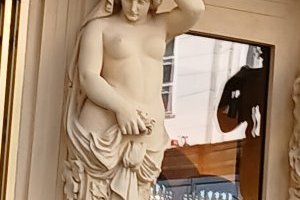
Once upon a time, two centuries and a bit, The German world was split in two, the Hapsburg Slavic lands and and the archduchess and kingdoms that would wind up under the Prussian Hohenzollerans before the whole thing blew up in the First World War. But that was later.
Austria wasn’t much then, and it isn’t much now, but in this picturesque bit of nothing was Vienna, also known as Wein. The capital of the Holy Roman Empire of the German Nation for far shorter than one would expect, The downtown palace complex called the Hoffburg is where the family and their empire were headquartered for about 400 years, on and off. This was the most glamorous and expensive bit of palatial architecture ever made. Well worth a look.
There were three phases in the construction of the complex, once in the 15th century when the schlubby Emperor Fredrick III died and his son Maximillian took over and turned out to be quite capable, this lasted until his grandson, who lived in what is now the Netherlands, managed to beat Henry VIII (he was), of the six wives, through a process know to historians as “heroic bribery,” for King of the Romans (the Pope had to crown one to make them the actual Emperor, so Chuck and his successors called themselves "Emperor-elect") Then the city became a bit of a backwater while Charles V (I of Spain) hung out in Spain and Brussels.
The Second phase began …
Keep reading 0 comments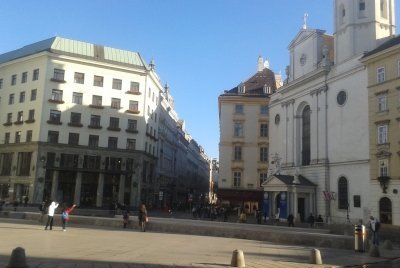
Vienna is my most frequently visited WHS outside Czechia.
Actually, I like more Prague or Budapest, since Vienna lacks the 3rd dimension, - the city core is pretty flat, and also a big river does not contribute too much to the inscribed part in contrast to spectacular 3D centers of Prague and Budapest intersected by a river.
However, the 4th dimension (time) is perfectly and uniquely readable in Vienna. The center is like an onion: winding medieval streets with fragments of early gothic tower houses and hidden jewels like gothic church St. Maria am Gestade are located inside. The late gothic layer is represented by St. Stephen cathedral, which however has the early gothic westwerk - and it is always a feast for me to distinguish the diverse stages of gothic style. Then we have Graben, and baroque appearance of Hofburg, which also has gothic and renaissance layers inside, followed by great 19th Century Ring with Opera, Museums, Parliament, Municipal Hall. The 19/20th layer is represented by grandiose Secession. All this is completed by parks and gardens, the Belvedere castle, and magnificent baroque Karlskirche. Do not miss also nearby non-inscribed parts of Vienna: Nashhmarkt and Hundertwasserhaus.
In contrast to Prague and Budapest, Vienna time-layering was not spoiled by tasteless Communism.
PHOTO - Michaelerplatz as the case study of time-layering: the archeological findings of Roman Vindobona is presented in the middle of the square. the baroque parts of Hofburg with fountains are the eye-catchers. On the opposite …
Keep reading 0 comments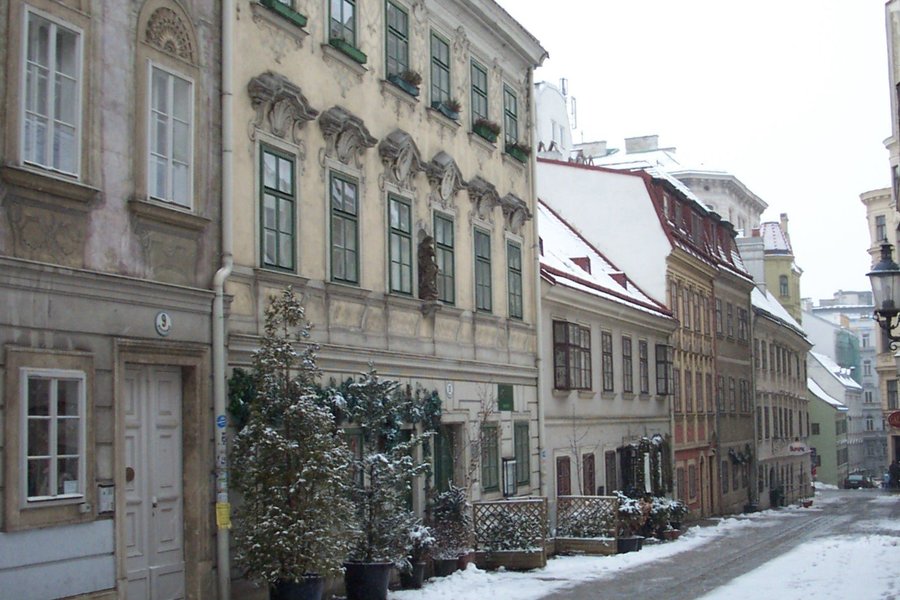
Vienna developed from early Roman settlements into a Medieval and Baroque city, the capital of the Austro-Hungarian Empire. It played an important role as a leading European music centre, from the great age of Viennese Classicism through the early part of the 20th century. See this new video of The World Heritage Traveler: Wien / Vienna & Schönbrunn
Keep reading 0 comments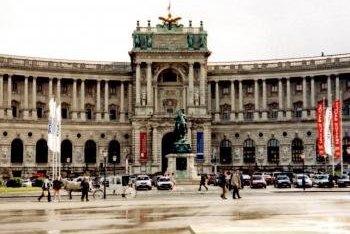
When traveling by train in central Europe, it's hard not to transit through Vienna, and the city is well worth a visit for the architecture and culture. This is the season for balls in Vienna, but when I visited the city with my siblings in the fall of 2003, we were off-season. Nevertheless, the tour of the baroque Hofburg Palace downtown was fascinating, and I enjoyed the opulent rooms and the variety of art and artifacts on display. Anchoring Stephansplatz, the gothic Stephansdom cathedral with its elaborate tiled roof and soaring bell tower was one of the most memorable sites in the city, and the interior was almost as beautiful. Also memorable was the baroque Karlkirche, with its elegant dome. Vienna is a city of music, with a long list of composers who at one time were employed there. Accordingly, we made pilgrimages to renowed performance halls which we had heard about, including the Muzikverein, the Konzerthaus, and the Staatsoper. Although the weather was a bit rainy when we visited, Vienna exceeded our expectations, and I would love to go back some day.
Logistics: The Historic Centre of Vienna has excellent public transportation, with a well-developed network of buses, trams, and U-bahn and S-bahn rail lines.
Keep reading 0 comments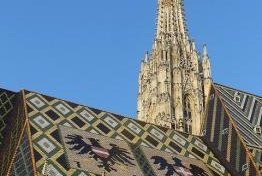
I visited Vienna in August 2015 and I spent 4 days exploring this magnificent city. I always knew Vienna was a beautiful city but I was pleasantly surprised at how well preserved it is and at how practically every facade, street and park is packed with historical, architectural and cultural sites to admire. The historic centre is huge and is much more difficult to cover when compared to Prague or Budapest. A day ticket for the tram costs 6 euros and it is worth buying to visit the farthest sites such as the Belvedere Palace (and Schonbrunn too). However, if you're fit and have enough time the best way to explore the city is on foot (paying attention not to end up with a stiff neck as you'll be looking up at the Jungendstil, Art Nouveau and Baroque facades and statues all the time!). The City Hall is where several important sites are situated: the Hofburg Palace, the Natural History Museum, the Fine Arts Museum, the Spanish Riding School, the Museum Quarter, Karlskirche, etc. Otto Wagner's creations are not only worth visiting but could be a WHS on their own as they really are of OUV. The Secession is my personal favourite in Vienna but all are really worth viewing. St. Stephen's Cathedral stands tall in the middle of the historic centre and I had long wanted to see its marvellous roof tiles. The Am Hof and nearby streets and buildings are always packed with people. Yet, they are outstanding …
Keep reading 0 comments
Vienna, what a city!
The international, Habsburger flair can be seen everywhere. I loved the food, the architecture, the Gemütlichkeit, and especially the castles. Bellevue, the Karlskirche and the Naschmarkt were the most fascinating objects.
Visted May 2007 and March 2010
Keep reading 0 comments
I loved Vienna! It was an amazing city due to its' history, palaces, artwork, churches and music. We spent several days here exploring both the city and the outskirts. Transportation by the train was easy and inexpensive. ?The food was excellent and the people very friendly. Within the city, they almost all spoke some English but just outside the city, not so much. Vienna was my first experience in a European city and it was magical! My grandmother was from Austria so the trip held some sentimental value as well.
Keep reading 0 comments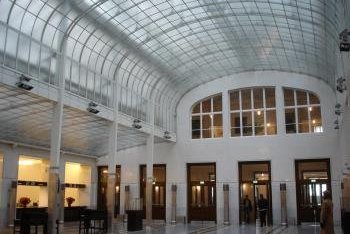
Why another review about Vienna? Vienna is one of the WHS with the most visitors and most reviews on this website. The answer is: just to draw attention to a building, that is often overlooked by tourists who spend only a few days in Vienna. Of course, the city is mainly known for the Hofburg, the Opera House, the buildings on the Ringstrasse, and Schönbrunn. But there are also extraordinary buildings of Art Nouveau. Well known are the Vienna Secession and the Karlsplatz Stadtbahn Station, mainly because they are located at tourist hotspots. The building, which I like in Vienna at most (if one can ever decide) is the Postsparkasse (Austrian Postal Savings Bank) built by Otto Wagner. The building covers an entire city block, and it is Wagner's most modern work. A characteristic feature is the façade with aluminium-covered iron bolts, which are reminiscent of a treasure chest. Wagner not only constructed the building, but also designed the complete interior: furniture, lamps, clocks, floor coverings, safes, etc. For example, a glazed prism floor was installed in the Banking Hall to light the rooms below., Both the façade and the interior perfectly illustrate his motto: What is impractical can never be beautiful. It is still used as a bank building, you can visit the Main Banking Hall from Monday to Saturday. There is also a small museum with a second, small Banking Hall.
There are some more Wagner buildings outside the WHS core zone that are worth a visit: two …
Keep reading 0 comments
For the summer of 61 we went to Vienna with a group 50 people. Especially the Golden Hall in the Wiener Musikverein is something I never forget. Unfortunately I missed the tour to the Universität Wien, but from what I did see I think students in Austria are lucky. Terrific city, I look forward to seeing it!
Keep reading 0 comments
I am an American who lived in Wein (Vienna) for 3 years on business. They were three of the most memorable years of my life and I would recommend expatriating to Wien to anyone with an adventurous spirit. The first thing you must do to maximize your Austrian experince is to embrace the difference. Live the lifestyle of an Austrian as much as possible. Drink cafe malange and wein gespritzer with the locals. Eat at the local gasthaus with them and shop for groceries at a Julius Meinl and a local markt. Speak Deutsch as much as possible and the locals will open up to you. The culture of Wein is complex and generally it takes an auslander in Wein 2 years before asking the right questions... and then another 2 years to figure out the answers! The seasonal changes in Wein are magical. Christmas time Kris Kringle Markts dot the city are very festive, particularily the one at the Rathaus. Try the gluwein and hot chestnuts. Austrians take their Skiing and Waltzing seriously and fasching (ball season) carries the city thru the coldest months. Spring brings the tourists in droves. Summer weather is celebrated in the outdoor cafes and Heurige. Bicycling along the Donau canal was one of my favorite Saturday workouts. Autumn brings some great new concert series and you should take in some classical music and performing arts since Wein is the musical Capital. It's impossible to even scratch the surface of a Wein experience in a …
Keep reading 0 comments
I too lived in Vienna for some time. I don't want to glorify this city further but focus on some of the museums found in the inscribed area - great works of art on their own right.
Belveder is a grand palace now housing the Austrian Gallery of Art. It mainly exhibits Austrian art with Oppenheimer, Schiele, Kokoschka and Klimt as its main gems. The Belveder is also quite impressive as a palace. Mainly its lesser palace has some beautiful chambers. There's also the lovely garden connecting the two palaces.
As its (for me unequal) rival (it is even better!) there is the Kunsthistorisches Museum (Museum of Art History) based on the Kaiser's art collections. Its exhibits are fantastic (especially Ancient Egypt, Rubens, Tizian and Breughel Elder). The building once again is a masterpiece built in a Neo-Baroque style but beautifully decorated in its interior by some Secession artists.
Another must-see on this list is the Secession building itself. It used to be the centre of Avant-Guard art at the end of the 19th Century. Except of Klimt's Beethoven Fries there isn't much of importance to see inside though, but the outside is a good exemplar of this school's revolutionary style.
In the Neues Palais (New Palace) of the royal residence you can see the Ephesos Collection (important findings from the now Turkish site), armoury, musical instruments and the royal treasury. All of these originally belonged to the royal family and are among the best of their kind in the …
Keep reading 0 comments
Vienna is "my city" since I was born here and lived here all my life. Sometimes I feel like a tourist myself when I walk through the inner city and see all the tourists from far-away places admiring the architecture, the Sachertorte or the "Wiener Kueche" (Viennese cuisine), which is basically a mixture of Hungarian-Czech-Austrian cuisine (Gulyas for example is Hungarian). I love my city and I think it is a really great place to live.
Keep reading 0 comments
Vienna stands tall on a short list of cities that can lay claim to significantly influencing Western culture over the past centuries. It is a musical capital, fostering the emergence of the "Classical" style as expressed by Haydn and Mozart and nurturing the early Modern style as envisioned by Mahler and Schoenberg. Moreover, it is an intellectual capital, where Freud revolutionize the field of psychology. Still others in the fields of art, architecture, and literature have been inspired by its ambience and spirit. For those making the tourist rounds, the Innere Stadt holds many sights, including Stephansdom and the Hofburg, while the Ringstrasse, a wide boulevard following the foundations of the old city defenses, boasts a proud array of monumental buildings, worthy of any empire. Vienna's appeal lies mainly in its past, but it's a past that everyone should encounter and enjoy.
Keep reading 0 comments
I´m probably a little biased on this site, since I have been there so many (innumerable, practically) times. The World Heritage area is just the Inner City (the First District), plus a few areas besides (like the Belvedere Palace area), but it really captures the essence of Vienna and gives a great overview of its history, from the earliest beginnings as a Celtic and Roman settlement through the (frankly less remarkable medieval and Renaissance periods) to the time of Vienna´s greatest glory, the Baroque, when it was the capital of a huge empire, and on to the 19th century, when the Ring Street with the Parliament Building, City Hall, the University, the Opera, and the two great museums was built. So wandering around the Inner City takes you through all epochs in a short time, and there´s a lot to see, but the major, must-see attractions are St.Stephen´s Cathedral and the Hofburg, the maze-like Imperial Palace Complex. Most impressive is the Treasury, which contains priceless works of art from many periods. Sure, the city can get very crowded, but it´s easy to get off the tourist trail - just don´t take a map and let yourself get lost in the small streets and alleys. Sooner or later you´ll end up on the Ring. And since one of the major reasons for inscription on the WH list was Vienna´s role as a capital of music, a night at the Opera or at one of the many concerts is probably a must …
Keep reading 0 comments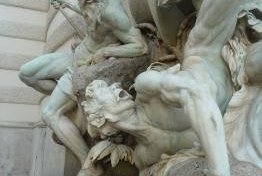
I had received pretty mixed reviews about Vienna so I was not expecting much when I arrived. However I was stunned when I got to walk around, the wealth of Grand Buildings, Statues and Fountains left me pretty awe-struck.
My first experience arriving was at dusk on a beautiful summer evening when I walked around the Ringstrasse as it was being lit up. During this stroll I even caught a choir in Stephansdom.
In addition to the listed buildings in the centre I also really enjoyed visiting the unique architecture of Friedsensreich Hundertwasser, located just a short walk away.
I was massively impressed by the city and there is so much to see that I would have no problem going back for another long weekend.
Keep reading 0 comments
I have visited the magnificent centre of Vienna thrice, and I plan to go back again. It is just endlessly fascinating. The city revolves around St. Stephen's Cathedral, with its enigmatic single spire. Apart from this, points of interest include the Cafe Central and other decadent coffee houses, the Stadtpark and the Strauss statue, the Danube which unfortunately was never blue but is fun to travel on by ferry, the Hofburg, Belvedere and Schonbrunn palaces, the Museumsquartier with several fine museums within walking distance of each other, the Musikverein and the Konzerthaus concert halls, the memorial houses of many classical composers, the Central Cemetary which is almost a museum, The Prater (fairground including the famous Ferris Wheel), numerous extremely ornate and beautiful churches (The Votivkirche and St. Peter's are the best of these), the UN headquarters in Vienna, The Rathaus (Town Hall), The State Opera (Staatsoper) and the Folk Opera (VolksOper), the House of Music (Haus der Musik), the Kärntner Straße and Mariahilfstraße shopping areas, the old-world Sacher and Imperial hotels ... the list is endless. Apart from these, the friendly Austrian people and the street entertainment top off one of my favourite cities. The metro (subway) is very comprehensive, and the Vienna Card for tourists is good value. Vienna, is indeed, the City of Dreams.
Keep reading 0 comments
Vienna, is a most stately, magnificent, majestic city. But the most majestic? It’s certainly near the top of the list, if not at the very top.
Located along both sides of the Ring-Strasse, the many impressive things to see include the Opera, museums, castles, the Rathaus (city hall), Beethoven-Platz, the Stadtpark (City Park), several precision-planted gardens, and a guidebook’s-worth of things to see and do. Hours and days can, and should, be spent walking and looking at this most unusual boulevard.
Vienna’s tourist map lists so very many churches, palaces, synagogues, academies, libraries, theaters, embassies, towers, and Government buildings.
If you are hungry, in addition to the famous Sacher-Torte (cost up to $30) at Hotel Sacher Vienna, tried and true McDonald’s are available for a quick snack, or a restroom break.
Keep reading 0 comments
Vienna is one of the greatest cities in the world. I had the privilege to live there for six months and I can say that it was the one of the greatest times in my life. There is so much to do and see in Vienna. For the best tips on what to see, find the Mormon missionaries. They know all of the best places and many of which aren't frequented by tourists.
Keep reading 0 comments
Vienna, like Prague and Budapest, is a profound experience. Many commentators will describe the beauty of its baroque architecture, and endless other qualities. While these descriptions are often very accurate, one of its stand-out qualities is its people. I have been to Vienna several times and will be returning very soon because of the Viennese culture. My experience has been that the Viennese are, while relatively wealthy, particularly friendly. The Viennese are both gentile and sophisticated. I can only urge anyone who is travelling to Europe for the first time to start your European experience in Vienna.
It would not be possible to properly explore Vienna under 4 nights or 5 days. Must see in Vienna; walk and walk the entire 1st District. This includes Hofburg Palace and St. Stephen's Cathedral. Also The Abertina, Belvedere and Schonbrunn palaces, and definitely a performance at Motzarthaus.
Best time to go to Vienna. Anytime, but I love Vienna in the snow, but Spring is breathless, particularly Belvedere and Schonbrunn.
Last, please learn some basic German, even it's to say please or thankyou!
Keep reading 0 comments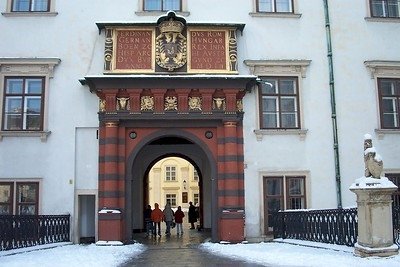
It's a joy to explore Vienna's center on foot. You don't have to worry too much about traffic, and this slow pace enables stopping every 5 minutes or so - to stare in awe at the buildings. Almost every one of them has special ornaments: iron balconies, circular towers, frescoes, statues, and marble pillars.
The City Hall ("Rathaus") is a relatively recent addition to Vienna's splendour (19th century). This huge building at the Ring is in neo-gothic style, and this way blends in very easily with its surroundings. Another highlight for me was the "Am Hof"-square - this is where the medieval predecessors to the Habsburg family had their main seat. Nowadays the fire brigade inhabits one of the magnificent buildings here.
Vienna was a pleasant surprise. Having visited Prague and several German cities, Vienna does stand out because of its overall character: its cleanliness, the condition of its buildings and the general chic atmosphere.
Keep reading 0 comments
